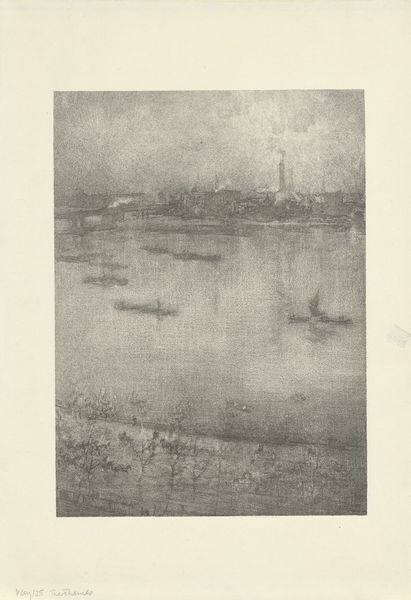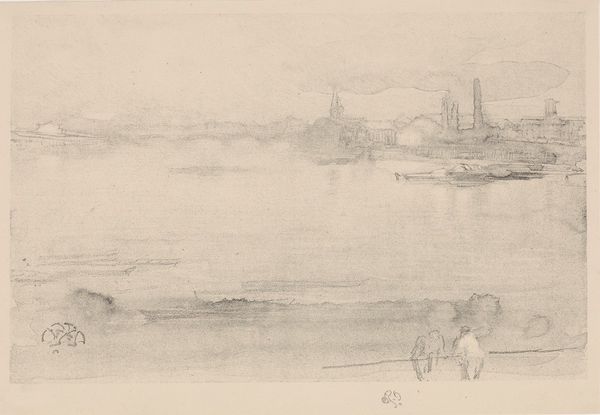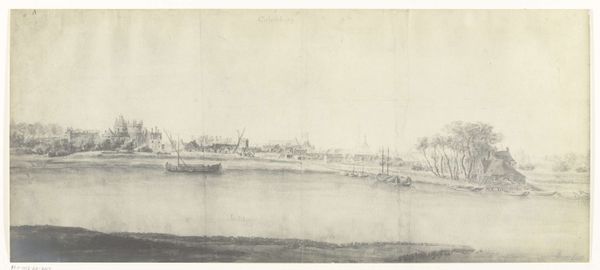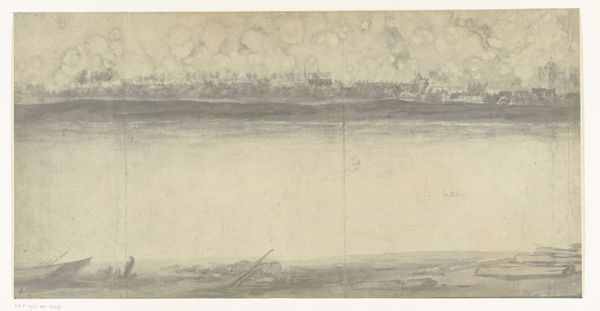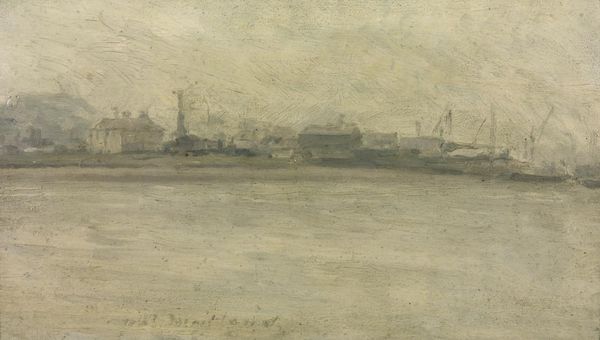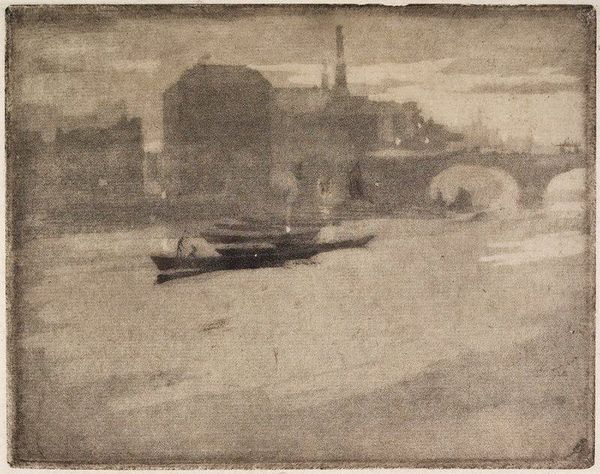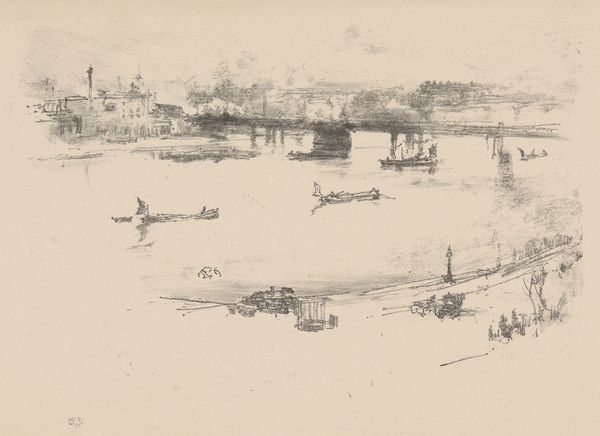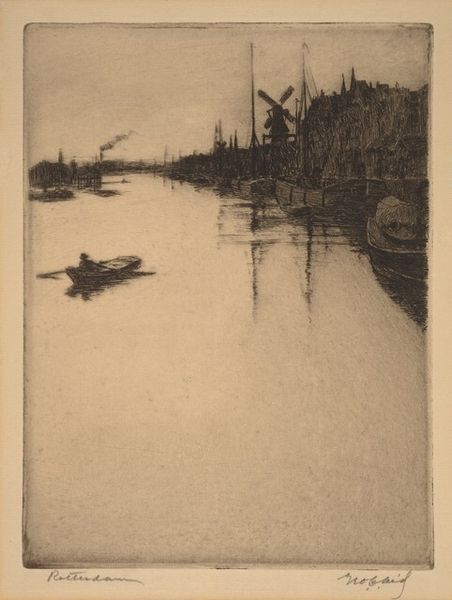
drawing, print, etching
#
drawing
# print
#
etching
#
landscape
#
etching
#
pencil drawing
#
cityscape
Copyright: Public Domain: Artvee
Editor: So, this is Whistler's "The Thames," an etching from 1896. It feels...quiet, almost melancholy, with this vast expanse of water and hazy skyline. What do you see in this piece? Curator: I see a critical commentary on industrialization. Whistler presents a scene where the romantic ideal of the river meets the stark reality of factories and industry, don't you think? Notice how the etching captures both the beauty and the grittiness, almost romanticizing this harsh landscape. What effect do you think this creates? Editor: It’s interesting…it almost makes the industry look inevitable, but also maybe a little suffocating? Is it meant to make us think about progress versus nature? Curator: Absolutely. Whistler, through this slightly obscured vision, encourages us to consider the cost of progress, the pollution, and the changing urban landscape. Consider how class and labor intertwine with environmental changes in depictions like these. Who do you think these landscapes were made for, and who do you think was erased in their representation? Editor: I never thought about that! I guess I was just seeing the pretty picture, but thinking about who’s left out definitely adds another layer. Maybe the working class whose lives are powering this industry are ignored, and whose neighborhoods are right next to those factories. Curator: Exactly! It highlights how aesthetic choices are deeply embedded in social and political contexts, something we continue to grapple with today in conversations about environmental justice. It's a reminder that art isn't created in a vacuum. Editor: Wow, I'm seeing this in a completely new light now. Curator: And hopefully considering its implications in our current climate.
Comments
No comments
Be the first to comment and join the conversation on the ultimate creative platform.
